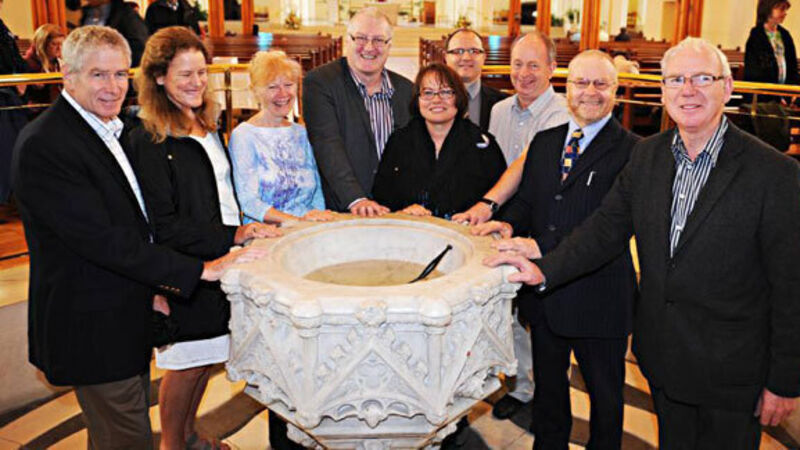Denise Hall: Celebrating life’s work of Mary Harris Jones

It’s that time of year again.
Along with that first flush of green, the clusters of buttercup-yellow primroses, fragile shoots of harebells, and the first irresistible call of the feckless cuckoo, there are the festivals.
And it seems that there are new ones emerging every year.
A festival is “any occasion for celebration”.
And during the long lazy months of summer, we find cause to celebrate everything, from mussels to uillean pipes.
Art, culture music, storytelling and in some notable instances, remarkable people.
One such festival that’s in its fourth year is the Spirit of Mother Jones Festival in Cork, set to run from July 29 to August 1, including 30 events over four days.
Born in 1837, Mother Jones, a tireless fighter against injustices, was once known as “the most dangerous woman in America”.
The fourth annual Mother Jones festival will feature concerts, public lectures (including guest speaker Fr Peter McVerry), workshops and an exhibition of her life and times, in addition to information on others who fought in the same spirit.
It’s a robust programme that Mary Harris Jones herself would no doubt have warmly approved of.
She was the daughter of Catholic tenant farmers, Richard and Ellen Harris, and was born on the north side of Cork city on May 1, the day eventually chosen to represent the international labour holiday.
Mary emigrated with her family to Canada as a teenager, and was educated in Toronto, before her family moved to the United States. She became a teacher in Michigan, moved to Chicago, and later Memphis, where she met and married George E Jones, a member and organiser of the National Union of Iron Moulders in 1861.
Ever industrious, Mary opened a dress shop in Memphis on the eve of the Civil War.
What was, by all accounts, a happy marriage and family life, was sadly not to last. Mary and George had four children all under the age of five when she lost her beloved husband and her children in just one week, during a yellow fever epidemic.
Mary moved back to Chicago and began another dressmaking business.
But fickle fate wasn’t finished with her yet.
Four years later, when she might reasonably be expected to have begun to come to terms with her awful loss, her hard-earned home, shop and possessions were destroyed in the Great Chicago Fire.
This second tragedy caused Mary to take a good, hard look around her at the poverty and exploitation she saw among the poor of the devastated city.
She turned to the labour movement.
She joined the Knights of Labour, a surprising move for a woman at that time.
Mary went on to become affiliated with the United Mine Workers (UMW), where she was soon leading strikers in picketing.
Despite many threats to her person, Mary encouraged workers to stay on strike even after the management brought in strike-breakers and baton-wielding militia.
Although she was obviously a fiery and determined woman, Mary Harris had a deeply conservative streak and believed that “working men deserved a wage that would allow women to stay at home to care for their children.”
She gained prominence for organising the wives and children of striking workers, and was tried in 1902 for ignoring an injunction banning meetings by striking miners. “She comes into a state where peace and prosperity reign... crooks her finger, and 20,000 contented men lay down their tools and walk out,” said West Virginia’s frustrated district attorney, Reese Blizzard.
By the time she was 60, Mary had effectively assumed the persona of “Mother Jones”, by claiming to be older than she was, wearing outdated black dresses, and referring to the workers she supported as “her boys”.
The Children’s Crusade she organised saw children carrying plaintive banners, which read, “We want to go to school and not the mines”.
During a strike in West Virginia in 1912, nothing daunted, Mary began speaking and organising during a shooting war between the UMN members and the private army of the mine workers.
Despite various prison sentences and a serious case of pneumonia, the indefatigable Mother Jones continued organising and speaking on union affairs and workers rights, almost until her death.
She celebrated her self-proclaimed 100th birthday at the farm of friends in Maryland, on May 1, 1930.
She died in November of that year.
Last year, she was remembered in her native city by such eminent speakers as human rights solicitor Gareth Peirce and union and environment activist Si Kahn.
This year, Chris Mullin recently accepted an invitation to be a guest speaker at the 2015 Mother Jones Festival.
A man of many parts, when I caught up with him, Chris was anxious to get outside and plant potatoes.
In the 1980s, he led the campaign that resulted in the release of the Birmingham Six.
Before being elected as an MP, Mullin was a journalist, training with the Daily Mirror and working for the Granada current affairs programme, World In Action.
A Member of Parliament for Sunderland from 1987 to 2001, Mullin has written three widely acclaimed diaries and three novels — including the classic political thriller, “A Very British Coup”.
He was a Minister in three Government departments.
Mother Jones Festival Co-ordinator Gerard O’Mahony says of Chris, “He will never be forgotten in Ireland.
“He stood up to be counted when it mattered, and his book Error of Judgement: Truth About the Birmingham Bombings, is a tribute and a monument to his courage, dedication and tenacity, attributes also possessed by Mother Jones.
In the north-east of England, in a beautiful valley called Alnick.
It’s on the edge of the Cheviots. We’ve been there for two years now. Our cottage is lovely and it has a walled garden. I speak at festivals and other events, about 100 in the average year, so I keep in touch, and I write, articles and a follow-up to “A Very British Coup”
It was some miners from Co Durham, who took part in last year’s event, who suggested me, and I’m really looking forward to it. I’m giving two talks, one on the Birmingham Six, and the other about Tony Benn. I’ll be in Cork for three days. I haven’t been there since “Error of Judgement”.
Yes, headlines included “20 things you didn’t know about Crackpot Chris”, and “Is this the most odious man in Britain?”
When I was first elected in 1987, the Sun published photographs across a full page of what it called “Kinnock’s Top Ten Looney Tunes”. I was number eight. I now keep my Sun headlines framed on the wall of my study at home. There is a “Loony MP backs bomb gang” too.









